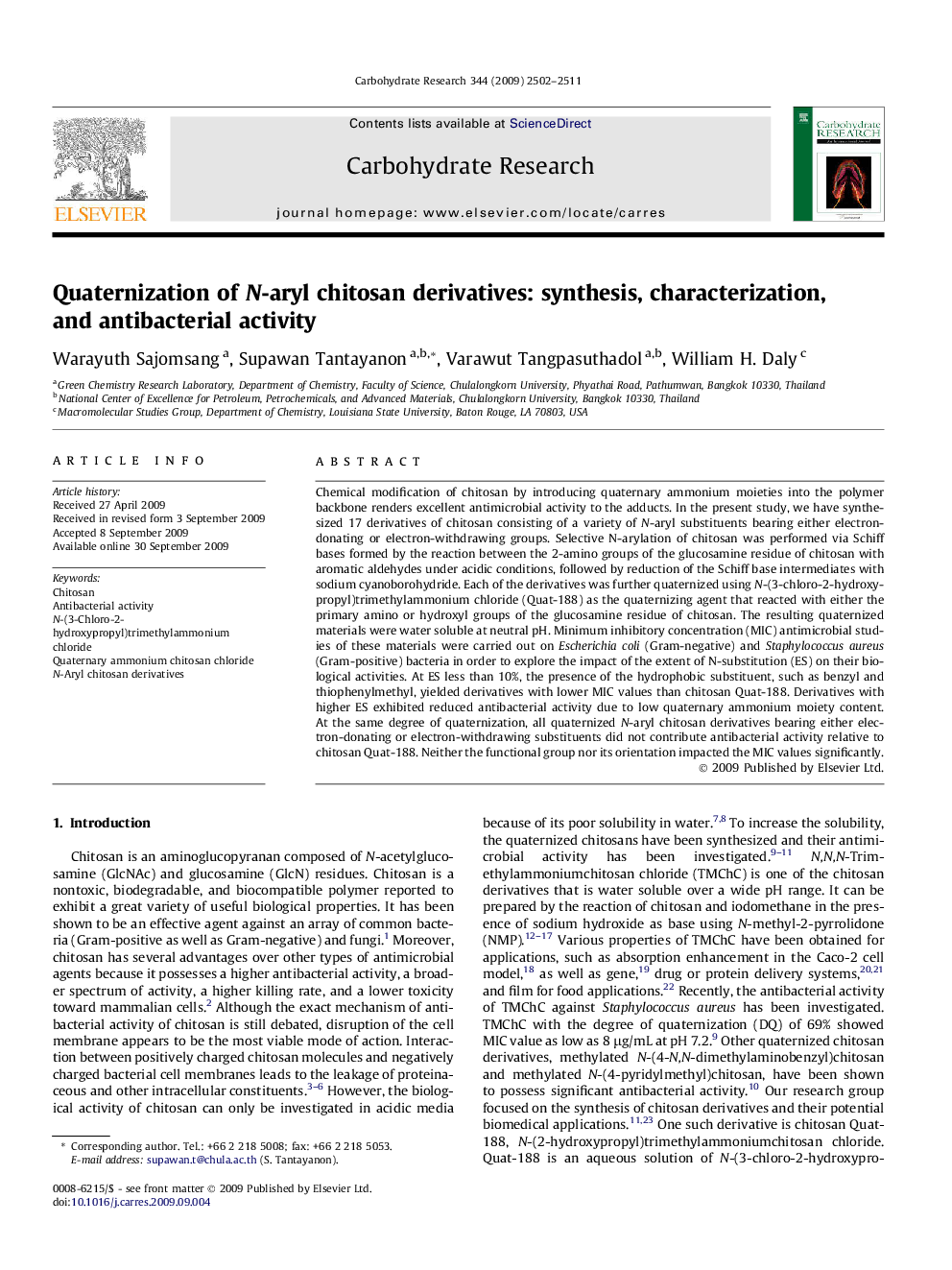| کد مقاله | کد نشریه | سال انتشار | مقاله انگلیسی | نسخه تمام متن |
|---|---|---|---|---|
| 1388182 | 982773 | 2009 | 10 صفحه PDF | دانلود رایگان |

Chemical modification of chitosan by introducing quaternary ammonium moieties into the polymer backbone renders excellent antimicrobial activity to the adducts. In the present study, we have synthesized 17 derivatives of chitosan consisting of a variety of N-aryl substituents bearing either electron-donating or electron-withdrawing groups. Selective N-arylation of chitosan was performed via Schiff bases formed by the reaction between the 2-amino groups of the glucosamine residue of chitosan with aromatic aldehydes under acidic conditions, followed by reduction of the Schiff base intermediates with sodium cyanoborohydride. Each of the derivatives was further quaternized using N-(3-chloro-2-hydroxypropyl)trimethylammonium chloride (Quat-188) as the quaternizing agent that reacted with either the primary amino or hydroxyl groups of the glucosamine residue of chitosan. The resulting quaternized materials were water soluble at neutral pH. Minimum inhibitory concentration (MIC) antimicrobial studies of these materials were carried out on Escherichia coli (Gram-negative) and Staphylococcus aureus (Gram-positive) bacteria in order to explore the impact of the extent of N-substitution (ES) on their biological activities. At ES less than 10%, the presence of the hydrophobic substituent, such as benzyl and thiophenylmethyl, yielded derivatives with lower MIC values than chitosan Quat-188. Derivatives with higher ES exhibited reduced antibacterial activity due to low quaternary ammonium moiety content. At the same degree of quaternization, all quaternized N-aryl chitosan derivatives bearing either electron-donating or electron-withdrawing substituents did not contribute antibacterial activity relative to chitosan Quat-188. Neither the functional group nor its orientation impacted the MIC values significantly.
Figure optionsDownload as PowerPoint slide
Journal: Carbohydrate Research - Volume 344, Issue 18, 14 December 2009, Pages 2502–2511